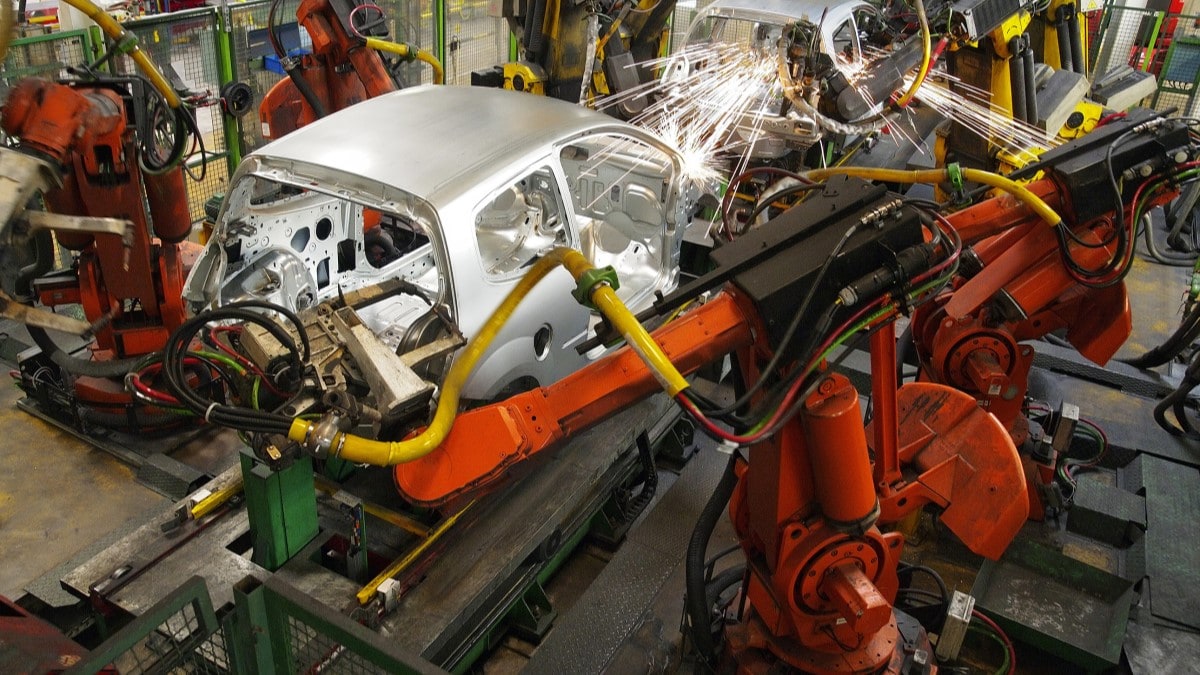
Update 1/31/25: White House Press Secretary Karoline Leavitt confirmed Friday afternoon that the U.S. will enact 25% tariffs on Canada and Mexico tomorrow, February 1. Confirmation came after conflicting media reports that the measure might be delayed. Goods from China will be subject to a 10% tariff, she said.
Our original story continues below.
Automakers and car dealers are bracing for a hit that could inflate car prices rapidly as soon as tomorrow if President Trump enacts promised tariffs of 25% on Canada and Mexico.
Trump has threatened the tariffs if the two countries don’t crack down on the flow of migrants and drugs across American borders.
Related: What Trump’s Tariffs Could Mean for Car Shoppers
Gathered in the nation’s capital for the Washington Auto Show, industry leaders and analysts repeatedly stressed hope that the tariff threat was a bluff to open talks or, if enacted, would be quickly negotiated away.
Tariffs would likely raise the price of every new car sold in America.
25% Price Increase for Many Cars
Many vehicles are built in Canada or Mexico and would be hit with a 25% tariff at the border.
The two countries host factories run by automakers based in the U.S., Asia, and Europe. The New York Times notes that the auto industry’s presence in Mexico “has grown following pandemic-related supply chain nightmares and increasing political tensions between the United States and China.”
Analysts from S&P Global Mobility estimate that “Volkswagen is the most exposed to tariff risk, with over 43% of its US sales sourced from Mexico.” Stellantis (parent company of Dodge, Jeep, Ram, and other brands) gets about 27% of its cars from Mexico. GM sources about 22%, S&P says. Ford imports just 15% of its cars from Mexico.
“Nissan sources about 27% of its US sales from Mexico, Honda nearly 13%, and Toyota and Hyundai at 8% each,” they calculate.
Varying Price Increases for Cars Built in U.S.
Even cars built in the U.S. use parts made in Canada or Mexico. Canadian parts are so common that, under U.S. law, every car’s window sticker reports its percentage of “U.S. and Canadian” parts, as if the two countries were one.
American University associate professor of information technology and analytics Frank DuBois publishes an annual study of the amount of American material in each car. He told Kelley Blue Book that even tracking Canadian parts separately is “going to be a data problem. A nightmare, I might say.”
Parts sometimes cross borders multiple times as they are assembled into larger parts and then into finished cars. A tariff would raise their price each time.
If Mexico and Canada respond with retaliatory tariffs – a common practice – parts would see a price increase every time they crossed either way.
Recent analyses from Wolfe Research and TD Economics each arrived at the same conclusion: The average car’s price will rise by $3,000 if tariffs are enacted. Some cars, particularly full-size trucks, could see prices rise by as much as $10,000.
When New Car Prices Rise, Used Car Prices Rise
A spike in new car prices tends to drive used car prices up. Many would-be new car shoppers, priced out of the new car market, head to used car sales lots instead.
The price of the average used car is already rising even before potential tariffs appear. Automakers built about 8.1 million fewer cars during the height of COVID-19-related lockdowns than they otherwise would have. That will depress the supply of used cars for years to come.
Many Hope the Issue Is Temporary
Bill Long, CEO of supplier association MEMA, told reporters yesterday, “Right now, even the threat of tariffs has the potential to be almost catastrophic.”
However, some expressed hope that if enacted, tariffs might not last long.
Greg Sunstrum is a senior policy adviser at Brownstein Hyatt Farber Schreck, a prominent auto industry law firm. Yesterday, he told a panel that “25% on Canada and Mexico is going to be very difficult to sustain for a long time.”
Cody Lusk, CEO of the American International Automobile Dealers Association, noted that negotiations to stop or limit the threat are likely already underway.
Automakers, meanwhile, seem to want stability. CNBC explains, “Uncertainty about trade took a toll on GM on Tuesday when the automaker’s stock had one of its worst days in years even after it beat Wall Street’s expectations for its 2025 guidance and its top- and bottom-line for the fourth quarter.”

